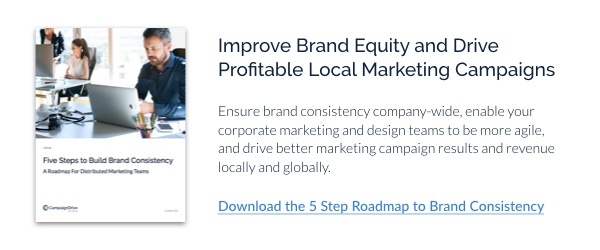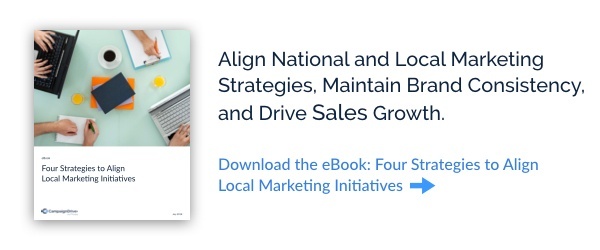Conducting a brand audit is an essential task in maintaining the health of your brand equity. Marketers that invest the time to take a closer look at their market positioning and build data-driven business strategies have a leg up on their competitors. Brand managers and decision makers can then analyze strengths, weaknesses, market forces, and opportunities for growth during audits.
Changes in market forces and consumer sentiment over time make brand audits a necessary process, one that should be regularly conducted to show progress. Setting a structured framework is a great way to ensure brand audits are being conducted so that data can be compared over periods of time.
Let’s take a look into a brief brand audit framework to get you started in your auditing process.
Brand Audit Framework
1. Define Brand Audit Goals And Objectives
Businesses of all industries and company sizes have distinct goals and objectives to accomplish. The first step of a brand audit is to understand the business goals and objectives that need to be met.
These goals will shed light on internal and external opportunities that align with an organization’s overarching needs. Objectives are important for ensuring all future efforts contribute to brand goals and are not wasted on irrelevant tasks or projects.
2. Audit Your Current Marketing Assets
Take into consideration the performance and consistency of branded marketing assets. What types of assets are used the most and drive the best results? Are designs and messages within brand compliance? And how are these materials and templates being distributed across teams?
These questions help brands understand their internal marketing processes that play a significant role in customer engagement. Especially in franchise marketing, ensuring that marketing materials are in line with corporate branding is essential for customers to have the same positive experience regardless of the location.
3. Identify Market Positioning
Using your goals and objectives, gather and compare key performance indicators (KPIs) to a few of your closest competitors and see how you stack up. This can expose positive brand performance, negative impacts, areas to improve, and possibly highlight efforts to discontinue.
The purpose of identifying market positioning is to pinpoint competitive areas that align with your business goals and objectives, then devise a positioning strategy to move your business where it needs to be in the market. Maybe a close competitor is winning customers over with a lower price point. Your business has the option of changing your pricing strategy or increasing perceived brand value to justify your price.
4. Identify Industry Trends and Events
Brand audits need to include an understanding of news and trends that may affect your industry. Staying on top of the latest trends can help brand stay relevant and top-of-mind. Responding to adverse situations quickly can especially help businesses build trust and brand loyalty; ultimately boosting positive brand equity.
Take the restaurant industry for example, if there had been a recall of contaminated produce, brands need to quickly react to ensure customers of their safety. By sending out a timely email or distributing marketing assets, like a pamphlet on food quality assurance, restaurants can quickly disperse any negative associations of their brand with the recall.
Learn More: 6 Ways to Measure Brand Equity + 3 Ways to Build It
5. Customer Feedback
Measuring consumer sentiment is a great way to gain insights into perceived brand value. By pulling data from text analytics or surveys, brands can gauge their strengths, weaknesses, and opportunities from the perspective of a buyer. Businesses that fail to understand their customers may be missing out on valuable opportunities for improvement.
Methods of gathering data on consumer opinion include: surveys, questionnaires, product or service reviews, and social media engagement all play a part in gathering consumer data. More importantly, these tactics should be implemented before, during, and after purchase to gain a holistic understanding of the customer experience.
6. Strategize Around Brand Audit Results and Monitor
Now that you’ve collected an abundance of brand audit data, it is time to strategize for future business initiatives. Take those valuable insights from your internal and external evaluations and begin compiling an action plan. Prioritize issues that align most with your overarching goals and objectives.
If you’ve conducted brand audits in the past, look back and see which goals were accomplished and which plans failed. Take these points into consideration when building your new strategy to avoid making the same mistakes or replicate winning tactics.
Be sure to document your brand strategy in detail and monitor all results and finding for future comparison. Record ongoing industry trends and events like these can serve as useful data points in future audits.
No matter how you choose to strategize and execute on your findings, remember that brand audits are a continuous process for staying competitive in evolving markets.
CampaignDrive by Pica9 is a distributed marketing platform that helps multi-location companies execute strategy at the regional level and increase the value of local initiatives. Our distributed marketing platform streamlines the brand audit process by centralizing design and marketing assets across multi-location and franchise brands and proving visibility into which marketing assets are used most often and by who.
Discover how CampaignDrive by Pica9 can elevate your brand equity with improved local brand compliance, increased collaboration, and streamlined content production. Request a demo today.







